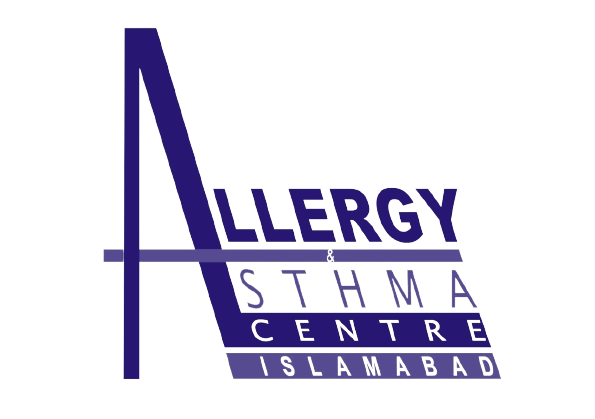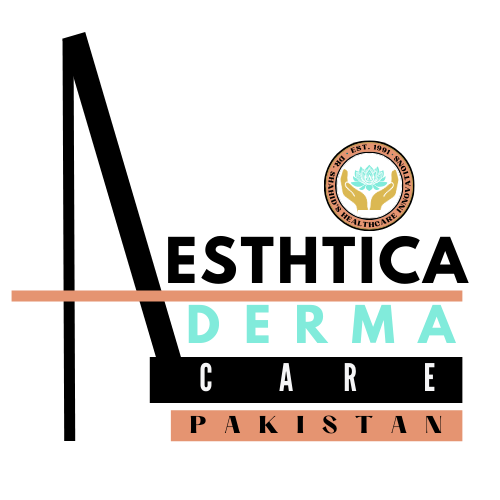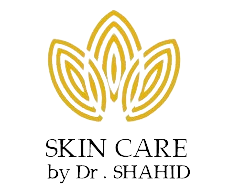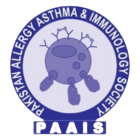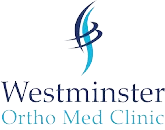Dr. Shahid's LDA: A Dramatically Effective Immunotherapy for Allergy
LDA (short for “low dose allergens”, or ultra low dose enzyme activated immunotherapy) is a method of immunotherapy enhanced by a minute dose of the enzyme, beta glucuronidase (dose is 10-13). The beta glucuronidase activates extremely miniscule doses of various allergens (10-6 to 10-17) and stimulates the production of T-suppressor cells, now called T Regulator (T Reg) cells. These cells actively “switch off” helper cells that are erroneously causing patients to be ill by misidentifying normal substances in the body to be allergens. T-cells may live for long periods of time in the bloodstream, so LDA needs to be administered only every 2 months at first, and then less often as time passes, generally with one to three tiny (1/20 c.c.) intradermal (in the first layer of skin) injections on the inner aspect of the forearm
LDA is used to treat all types of allergy, sensitivity and intolerance to inhalants (pollens, dust, mites, danders, etc.), foods and chemicals. It is used to treat such conditions as seasonal and perennial hay fever, asthma, all types of food allergy and many other problems.
LDA and the History of LDA
LDA is patterned after Enzyme Potentiated Desensitization (EPD), developed by the brilliant clinical and academic allergist, Leonard M. McEwen, M.D., in England in the mid 60’s [1-9]. The method involves desensitization with combinations of a wide variety of extremely low dose allergens (10-14 to approximately 10-6, or 1 part in 10 million to as low as 1 part in 1 quadrillion). These allergens are given with the enzyme, beta-glucuronidase. The beta-glucuronidase acts as a lymphokine, a substance that potentiates the immunizing ability of the allergens. EPD appears to specifically induce the production of activated T-regulator (Treg) cells, once known as T-suppressor cells, which can live in the circulation for many years.
I published my own EPD study in 1993 after 2 years of administration of EPD to 134 patients in my office [14]. As a result of the impressive improvement of most of those patients, I became enthusiastic about EPD and approached Dr. McEwen with the idea of doing a much larger study. He was enthusiastic.
So I founded the American EPD Society, a group of physicians to study Dr. McEwen’s EPD treatment, and we conducted the largest study of EPD ever done, from 1993 through 2001. Over 100 physicians participated in the study in the US and Canada from 1993 to 2002 and gathered data from approximately 10,500 patients. We studied the effects of EPD on 65 different conditionsincludes the study results and more detailed information about LDA). I felt that most of the results from the study were extremely impressive.
Some of the conditions treated successfully with EPD include hay fever [8,11, 14,15,25], dust mite allergy [16,20] perennial rhinitis [6,14], asthma [6,14,16,20], urticaria (“hives”) [14], eczema (dermatitis) of most all varieties [14], angioedema (swelling of the face, lips, etc.) [6,14], food (or food additive/preservative) allergy or intolerance [7,12], adverse responses to chemicals (“multiple chemical sensitivity” or “MCS”) [14], ADHD (Attention Deficit Hyperactivity Disorder) [13,14], autism, Tourette’s syndrome, irritable bowel disorders, Crohn’s Disease, ulcerative colitis [7] migraine and other headaches [14,16,17,21] rheumatoid arthritis, ankylosing spondylitis and systemic lupus erythematosis [27], to name just a few.
I had many visits from the FDA over those years, and it became clear that they disliked EPD because it was imported from outside the country, and EPD was not FDA approved. In April of 2002, the FDA declared EPD illegal for importation, and despite many hundreds of letters written to them by desperate patients begging them to allow EPD in the US, the use of EPD was terminated in this country.Once the FDA closed EPD down, I was determined to come up with a duplicate treatment for the thousands of patients in the USA who were dependent on EPD for their continued quality of health.
I called this treatment “LDA”, short for Low Dose Allergen therapy, and it has been used in this country and Canada since 2002.
My formulation used the same active components as EPD did, but I added many more pollens, foods, chemicals and other allergens. LDA is compounded legally in the U.S. by a large compounding pharmacy. The FDA has been told by the Supreme Court that it cannot regulate compounding pharmacies the same way it regulates “manufactured” (retail) drugs, so compounding pharmacies are permitted by law to compound specific “compounds” that physicians prescribe to individuals, including LDA.
The use of LDA is limited by necessity in the USA because it is available only by prescription for specific physicians’ patients, and is not available as a retail product. The compounding pharmacy is not permitted to actively advertise LDA to the public on a wide scale (per FDA regulations), so it is unlikely you’ve heard much about it. Many of the physicians now using LDA had used EPD in this country many years ago. Although no formal data about LDA has been published as yet, over 20 years of experience with it by over 150 physicians indicates that the same conditions that responded to EPD respond similarly to LDA.
The Difference between LDA and Conventional Allergy Immunotherapy
Conventional “escalating dose” immunotherapy (where the dose is started “low” – generally 1 to 10,000, and increased over time to as high as 1 to 10, 1 to 20 or 1 to 100) is employed in this country by many allergists, primarily to treat hay fever and cat and dust mite allergy, which are primarily IgE mediated. This type of immunotherapy works by causing the patient to produce “blocking antibody” (specific IgG antibody), which inhibits the histamine-releasing ability (which produces the allergy symptoms) of the mast cell.
The higher the level of blocking antibody that can be produced, the more successful is the treatment. In order to produce adequate levels of blocking antibody, studies have shown that it requires administration of very high doses of allergen. Therefore, treatment using this method often causes intolerable swelling and other side effects before clinical efficacy can be attained, and can be dangerous due to the risk of severe reactions such as massive swelling, anaphylaxis, collapse and even death. Furthermore, only inhalants – not foods or chemicals – are used.
Deaths from conventional escalating dose immunotherapy are generally a result of anaphylaxis. This is due to the extremely high dose of antigen required to produce a significant clinical effect and high level of antibody. LDA immunotherapy, however, is cell-mediated (probably TReg) and extremely low dose. The very highest possible dose of LDA (some LDA antigens are lower) is at least a million times less than the standard dose for conventional immunotherapy.
The danger of fatal or life-threatening systemic reactions to LDA treatment is negligible. Well over 400,000 doses of EPD and an estimated 300,000 of LDA have been given worldwide, and – unlike many other types of immunotherapy – life-threatening reactions to EPD or LDA have never been reported.
Conventional escalating dose immunotherapy is generally administered twice weekly for the first four to six months of treatment. Once the very high maintenance dose is reached, the treatment interval may be extended to once every two weeks or even monthly, but rarely less often without return of symptoms. Conventional escalating dose immunotherapy cannot usually be stopped without the return of some or significant symptoms within 3 to 12 months of cessation.
As I stated previously, LDA immunotherapy is extremely low dose and administered infrequently, only every two months at first, and later less often. Treatment is required only every two months initially for a period of approximately 12 months. After that time, the treatment interval may generally be extended to three months or longer. Most adults with significant problems require 16 of 18 treatments at these intervals of two months or less often, at which time treatment often may be discontinued. Of the approximately 50% of patients who are unable to discontinue LDA after 16-18 treatments without return of some symptoms, the majority will continue treatment longer at intervals of 6 months to a year. Children (under 12) may often stretch their treatments out earlier, and stop sooner without return of symptoms. Children as young as one month of age have been treated safely.
LDA Treatment
LDA is administered using intradermal injections of 0.05 (1/20) cc in the skin of the forearm or sometimes in the leg. The method of intradermal injection is quite simple, and the LDA antigens are administered exactly as you would an intradermal skin test. The average patient receives 1-2 injections (usually one on each forearm) per treatment.
The response to LDA does not take long to appear, and certainly over 60% of patients note a significant positive response with their first treatment. Most all patients respond positively by the third treatment, and if no response is noted by then, we generally re-evaluate the situation. About one in 25 patients do not respond with strongly positive results until they have had 6 treatments. The overall response rate for all conditions treated with LDA is approximately 65-95%, depending on the condition being treated. The overall failure rate (no improvement) is about 9%.
LDA includes mixtures of antigens originally developed (for EPD) by Dr. McEwen that act quite “universally”, as the antigens in LDA are cross-reactive. This means patients allergic or intolerant to most substances have responded to treatment. I added several more antigens to LDA when it was formulated for use here, although I am not certain the antigens I added improved the treatment in general except for that of chemical sensitivity. Available LDA mixtures include 1) inhalants (inhaled pollens, animal danders, dust and mites, insects, fungi, yeast including candida species and molds), 2) foods and food additives, 3) chemicals, (containing most common chemicals and scents, formaldehyde and detergents, except for pesticides and herbicides,), 4) and woods, (a mixture of over 90 common and exotic woods), used for the treatment of contact skin sensitivity in woodworkers..
Other specific LDA mixtures, which I do not have space to discuss here, but work by way of a mechanism called molecular mimicry, are available to treat several specific autoimmune diseases, such as rheumatoid arthritis, ulcerative colitis, ankylosing spondylitis, scleroderma and others.
LDA has a few disadvantages compared to other types of immunotherapy. For example, most patients must adhere to a very restricted diet the day before, the day of, and the day after LDA treatment. There are also a number of medications (such as antihistamines and aspirin), that may significantly reduce or destroy the effect LDA if taken in the three weeks after treatment.
On the other hand, LDA has tremendous advantages, and has a distinct advantage in that it appears to effectively treat a very wide variety of disorders not generally perceived to be immune-related or caused by allergy, including illnesses that respond poorly – or not at all – to other methods of treatment of any kind. This would include migraine headaches, ADD and ADHD, Tourette’s, Raynaud’s and many others.
It is very important to note that LDA is dramatically effective for the treatment of eczema of all kinds. When you compare this to the usual dermatological treatment with topical steroids that is not really curative and goes on essentially forever, well, there is no comparison. LDA immunotherapy has worked well for angioedema, which consists of facial swelling, swelling of the lips or eyes or swelling of other parts of the body, primarily as a result of acute and chronic food allergy, but can be caused by many substances. There is no safe and effective traditional immunotherapy for this condition. The best conventional treatment can do with these conditions is by advising avoidance (when the substance is known) and using drug therapy and epinephrine to treat the problem.
Likewise, immediate food allergy, which can cause anaphylaxis (a condition that is generally life-threatening), has no effective treatment except for emergency drug treatment and avoidance of the offending food agent. This includes such potentially fatal problems as peanut and shrimp or shellfish allergy. After ten years of use, LDA appears to work well for this condition and can prevent death from accidental exposure to anaphylaxis-inducing foods, such as these.
Overall, LDA immunotherapy is considered a miraculous treatment by thousands of patients across the US and Canada who rely on it for treatment of a myriad of problems.
LDA is available in the US, Canada and the U.K.
Note: LDA is not approved by the Food and Drug Administration.
Bacterial Components of EPD are no longer included in LDA.
EPD contains bacterial antigens in all of the basic formulations. Dr. McEwen included these bacteria for various reasons, not the least of which was to treat chronic infections such as bronchitis. The FDA clearly frowns on bacterial vaccines in this country, no matter where they come from, and has removed all bacterial antigens (such as MRV, staph lysate and others) from pharmacy shelves, whether compounding or not. Since the other allergens and components in LDA are from pharmaceutical suppliers accepted by the FDA, Dr. Shrader did not want to include bacterial antigens in LDA.
Please note: neither EPD nor LDA are approved by the Food and Drug Administration.
The absence of the bacteria from the general mixtures of LDA appears to make no difference – with the exception of the treatment of facial rashes secondary to lupus, where “plain” LDA has appeared to fail for at least one patient. Otherwise, the fact that bacteria were not included in LDA does not seem to be critical, and since the FDA does not approve any bacteria used by a compounding pharmacy, there was really no choice.
If you have been treated with EPD and plan to switch to LDA
As mentioned, LDA contains most of the same components EPD originally did, Now that LDA has been employed since 2002 in this country, we have found certain idiosyncrasies.
Patients who switch to LDA from EPD may find they “relapse” for the first 2-3 LDA treatments. This is the rule rather than the exception, and the physicians using LDA have found that these patients return to their previous status usually by the time they receive three LDA treatments. After that time, patients who were receiving EPD treatments infrequently will get to a similar schedule on LDA, though they must generally receive LDA every 2-3 months again at first. Patients who took awhile to do well on EPD will take approximately the same time to do well again on LDA.
References for this page
- McEwen LM. Ganderton MA. Wilson CW. Black JH. Hyaluronidase in the treatment of allergy. British Medical Journal. ii: 507-8, 1967.
- McEwen LM. Starr MS. Enzyme potentiated hyposensitization I: The effect of pre-treatment with beta-glucuronidase, hyaluronidase and antigen on anaphylactic sensitivity of guinea pigs, rats and mice. International Archives of Allergy. 42:152-8, 1972.
- McEwen LM. Enzyme potentiated hyposensitization II: Effect of glucose, glucosamine, N-acetylamino-sugars and gelatin on the ability of beta- glucuronidase to block the anamnestic response to antigen in mice. Annals of Allergy. 31:79-83,1973.
- McEwen LM. Effects of sugars and diols on enzyme potentiated desensitization. Journal of Physiology. 230(1): 65-6, 1973 Apr.
- McEwen LM. Nicholson M. Kitchen I. White S. Enzyme potentiated hyposensitization III: Control by sugars and diols of the immunological effect of beta-glucuronidase in mice and patients with hay fever. Annals of Allergy. 31(11), 543-50, 1973.
- McEwen LM. Nicholson M. Kitchen I. O’Gorman J. White S. Enzyme potentiated hyposensitization IV: Effect of protamine on the immunological behavior of beta-glucuronidase in mice and patients with hay fever. Annals of Allergy. 34:290-5,1975.
- McEwen LM. Enzyme potentiated hyposensitization V: Five case reports of patients with acute food allergy. Annals of Allergy. 35:98-103,1975.
- McEwen LM. A double-blind controlled trial of enzyme potentiated hyposensitization for the treatment of ulcerative colitis. Clinical Ecology. 5(2): 47-51, 1987.
- McEwen LM. Hyposensitization. In: Brostoff J and Challacombe SJ., Eds. Food allergy and intolerance. London; Bailliere Tindall, 985-94, 1987.
- Fell P. Brostoff JA. Single dose desensitization for summer hay fever. European Journal of Clinical Pharmacology. 38: 77-9,1990.
- Eaton KK. Preliminary studies with enzyme potentiated desensitization in canine atopic dermatitis. Environmental Medicine. 8:140-1,1991.
- Longo G. Poli F. Bertoli G. Efficacia clinica di UN novo trattemento iposensibilizzante, EPD (enzyme potentiated desensitization) nella terapia Della pollinosi. Reforma Medica. 107:171-6,1992.
- Eggar J. Stolla A. McEwen LM. Controlled trial of hyposensitization in children with food-induced hyperkinetic syndrome. Lancet. 339:1150-3, 1992 May 9.
- Shrader Jr. WA. McEwen LM. Enzyme potentiated desensitization: A sixteen month trial of therapy with 134 patients. Environmental Medicine. 9 (3&4): 128-38, 1993.
- Angelini G. Curatoli G. D’Argento V. Vena GA. Pollinosi: una nuova metodica di immunoterapia. Medit. J. Surg. Med., 253-6, 1993
- Eggar J. Stolla A. McEwen L.M. Hyposensibilisierung bei nahrungsmittelinduzierter migrane. Actuelle Neuropadiatrie. 1992. A. Lishka, G. Bernett (Eds.) 1992. 287-291. Ciba-Geigy Verlag, Wehr 1993.
- Eggar J. Stolla A. McEwen LM. Controlled trial of hyposensitization in children with food induced migraine. Cephalgia.13: Suppl. 216, 1993.
- Di Stanislao C. Mazzocchetti E. Bologna G Chimenti S. EPD secondo McEwen: Studio cliniico, istologia e immunoistochimico. Bollentino de dermatologia allergologia e professionale, 2, 1994
- Astarita C. et al. Effects of enzyme potentiated desensitization in the treatment of pollinosis: A double-blind placebo-controlled trial. Journal of Investigational Allergology and Clinical Immunology 6(4): 248-255, 1996 July-Aug.
- Cantani A. Vanda Ragno V. Monteleone A. Lucenti P. Businco L. Enzyme-potentiated desensitization in children with asthma and mite allergy: A double-blind study. Journal of Investigational Allergology and Clinical Immunology. 6(4): 270-76, 1996 Jul.-Aug.
- Galland L. McEwen L.M. A role for food intolerance in childhood migraine. World Ped. & Child Care. 6: 2-8, 1996.
- Pulec JL. Enzyme-potentiated desensitization: a major breakthrough [editorial]. Ear, Nose, & Throat Journal. 75(10): 640, 1996 Oct.
- Caramia G. Franceschini F. Cimarelli ZA. Ciucchi MS. Gagliardini R. Ruffini E. The efficacy of E.P.D., a new immunotherapy, in the treatment of allergic diseases in children. Allergie et Immunologie. 28(9): 308-10, 1996 Nov.
- Ippoliti F. Rivi R. Businco L. Effect of preseasonal enzyme potentiated desensitization (EPD) on plasma IL-6 and IL-10 in grass pollen-sensitive asthmatic children. Allergie et Immunologie; 29(5): 120, 123-25, 1997.
- Di Stanislao C. Mazzocchetti E. Bologna G Chimenti S. A double-blind, placebo-controlled study of preventative immunotherapy with EPD in the treatment of seasonal allergic disease. Allergie et immunologie. 29(2): 39-42, 1997.
- Ward WA. Enzyme potentiated desensitization (EPD): a potential revolution in allergy care. Current Opinion in Otolaryngology & Head and Neck Surgery. 8:273-6, 2000.
- Shrader, Jr. WA. The use of bacterial antigen EPD immunotherapy for the treatment of rheumatoid arthritis and reactive arthritis: the role of molecular mimicry (unpublished), 1996, revised 1998, 2000.
